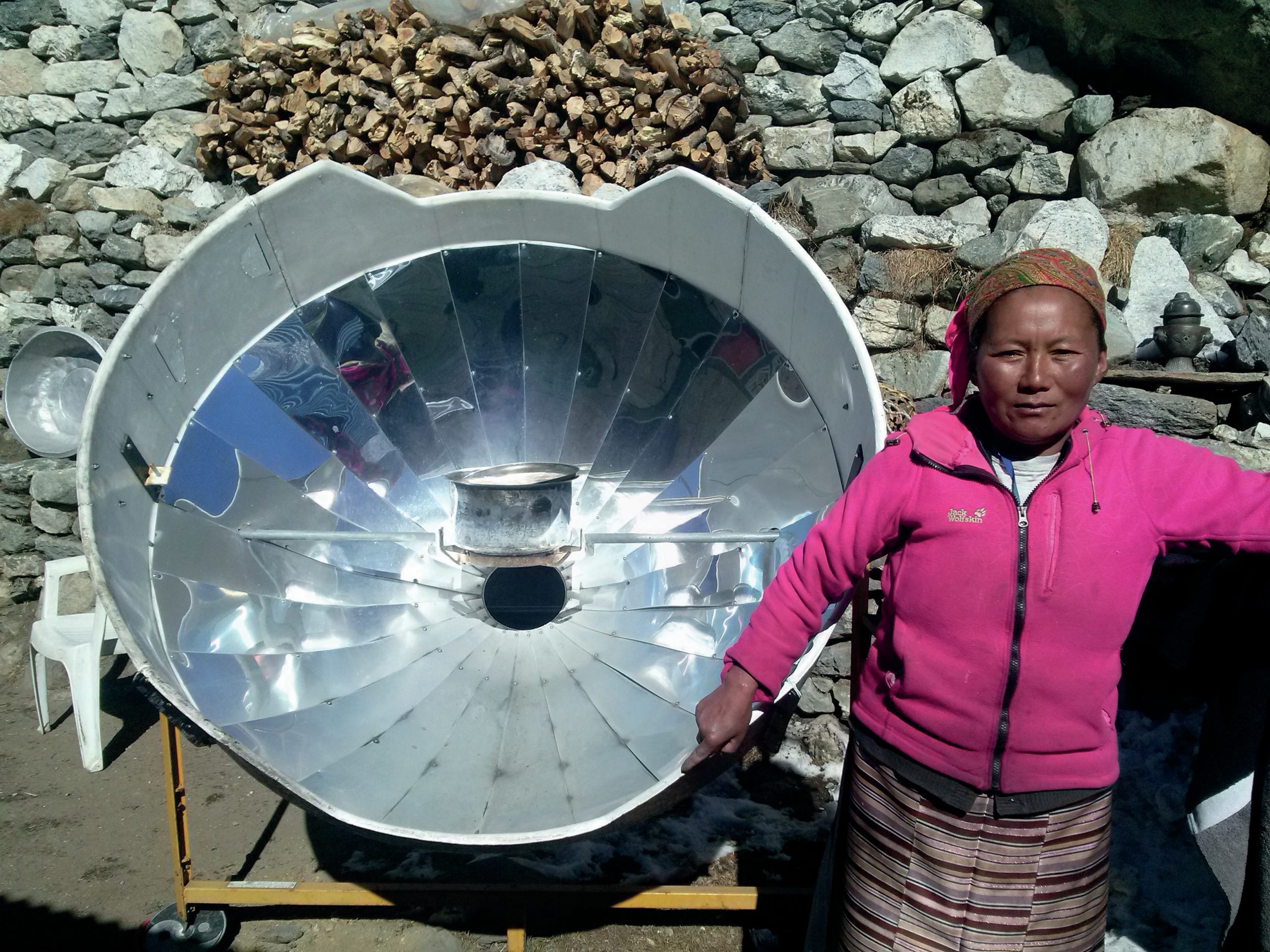
Mitigation and adaption are words that are often used in geography. We use them in the contexts of hazard management, responses to the challenges posed by climate change, coastal management and even when discussing whether or not there could be another economic crash. Despite their frequent use, these terms still cause a great deal of confusion. They have very different meanings and yet they are complicated in that one person’s mitigation could be another person’s adaptation and vice versa.
Take, for example, the photograph above. It shows a woman in Nepal proudly standing next to her new acquisition — asolar panel with which she can heat her home and generate the power needed for cooking, for washing and for recharging her mobile phone. In the background you can see piles of chopped wood which she will use for heating and cooking on an open fire when there is not enough sun to produce sufficient solar power. Before she had the panel this fuel would have been her sole source of heat. By burning less timber, she is reducing the amount of carbon dioxide (a greenhouse gas) being put into the atmosphere, and thereby mitigating a cause of climate change. But, by using a renewable form of energy in response to changes in her climate as longer dry and sunny periods occur, she is also showing an adaptation to the changing patterns of weather in her region.
Your organisation does not have access to this article.
Sign up today to give your students the edge they need to achieve their best grades with subject expertise
Subscribe




